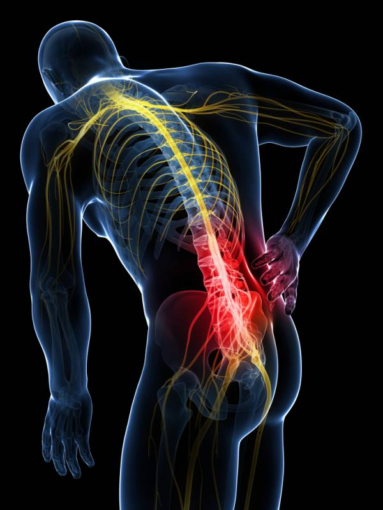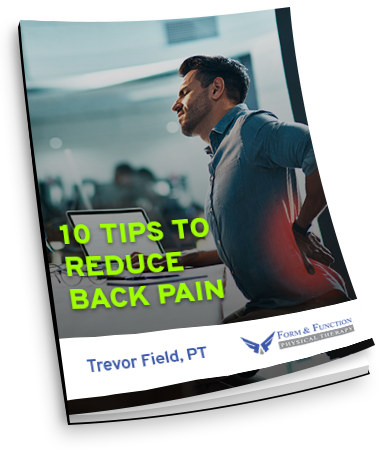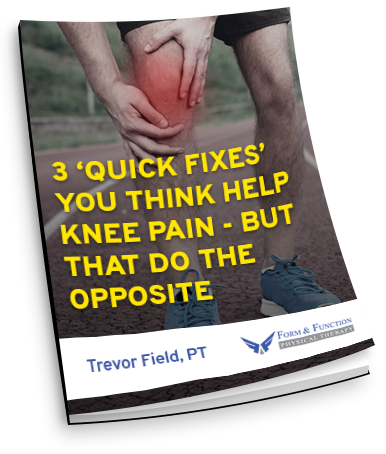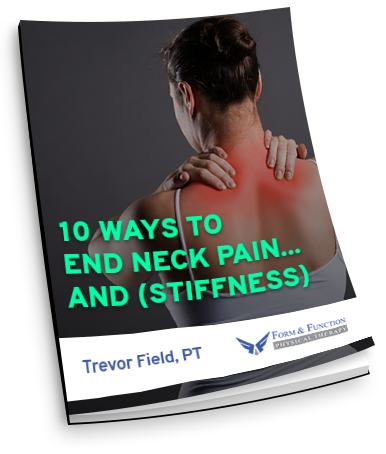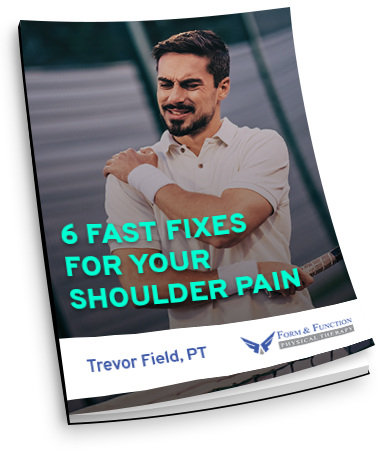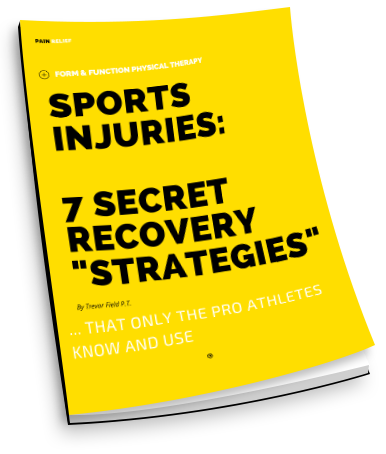Why is my disc herniated?
A good place to start when talking about your back is to understand the anatomy of the spine. Between each of the spinal bones (vertebrae) is a disc. The disc is made of cartilage with a gel center that works as a shock absorber for all of your life activities. Think of the disc like a piece of gristle on a cheap cut of meat. It is tough and resilient. If you have a mallet and you pound it enough, it becomes soft and mushy. Now, think of your daily activity whether it be sitting in a poor office chair, lifting with poor body mechanics, running, jumping and gym routines as the mallet. Over time the discs become ‘mushy and begin to bulge and can potentially herniate the gel center outside the disc.
For example, imagine if you squeeze a jelly doughnut, the jelly inside will protrude out opposite from the direction of the pressure. Most times it is pressure on the front of the disc that causes protrusion to the back (where the nerves are at). Now, imagine that you’re in a job where you’re always bending forwards, leaning forwards and/or picking up objects.
Eventually, this repetitive squeezing of the disc will cause the wall of the disc to wear down and the fluid will come out (much like the jelly doughnut we talked about!)
Certain behaviors or factors can raise your risk of developing a aggravated herniated or slipped disc. The most common factors for developing a herniated disc include the following:
- As your body ages, it becomes more likely that parts will wear out or break down.
- Certain careers place a lot of strain on your back, especially those that involve lifting heavy objects, sitting for extended periods, or twisting movements.
- Having bad posture.
Why Lumbar Extension Is Not The Best Exercise For A Herniated Disc?
One of the most common treatments for herniated discs is lumbar extension. The theories about how and why extension of the spine helps this state that in extension of the spine, pressure is removed from the anterior portion of the disc. In turn, this would cause the pressure on the posterior portion of the disc to move the disc contents that have herniated (the nucleus of the disc) to move back into place.
Back extension for lower back pain is taught in schools, in continuing education programs, and is all over the internet. It was the way I treated when first started practicing, and I had some success doing it. However, in many cases finding a comfortable amount of extension was hard. In fact many, especially the very acute/painful herniated disc patients, found it increased their pain in their lower back. We were taught a concept called “centralization of symptoms” which stated if the symptoms eased in the leg, yet increased in the back, it was a good sign that the nerve was under less compression. But this theory counters a more intuitive concept that “pain is a sign that something is wrong”.
Oftentimes, patients would complain of pressure on the spine, yet many clinicians would prescribe these exercises regardless if there were MRI findings confirming a herniated disc or not. There are more structures that can cause pain with back extension as well, the most common of which would be the facet joints. These are the joints that make all the noise when your spine pops, or cracks. It takes a true specialist PT to differentiate disc pain from facet joint pain.
The day everything changed
One day a patient with lower back pain and radiating pain in one of his legs came to me, and changed how I treat herniated discs forever. He brought me a set of MRI films like I had never seen before. A typical MRI is done in a tube with the patient lying on their back. He had these films with him as well and they showed a 5 millimeter protrusion in the L5-S1 disc. What was most interesting was the other set of films he had with him. They were films of him standing in a neutral spine position, in a forward bent (flexion) position, and in a backward bent (extension) position. The films were taken within a few weeks of his first MRI with no significant episode to worsen the condition. By changing the position from lying down to standing in neutral the protrusion increased to 7 millimeters. In forward flexion, the protrusion increased to 10 millimeters, and in extension the protrusion increased to 13 millimeters. That was the day I stopped any back extensions exercises for my patients, and why I consider back extension the number 1 exercise to avoid with back pain.
Do you remember our tenderized “mushy” disc from our earlier description? Extension promotes further migration of the disc toward the nerves. My opinion about why many patients benefit from this extension movement has nothing to do with its effect on the disc, but rather its effect of stretching the hip flexor muscles. One hip flexor, the psoas originates along the lateral surfaces of the vertebral bodies of T12 and L1-L5 and their associated intervertebral discs. It inserts at the lesser trochanter of the femur. When the lumbar nerve roots become irritated from a herniated disc or for any other reason, these muscles become very tense due the excessive messages being sent to them from the hyper-excited nerve causing additional shortening.
What exercises can I do with a herniated disc?
A more effective approach to treatment is to lengthen the muscles that are contributing to compression of the disc in conjunction with decompression of the disc through manual or mechanical methods, reducing inflammation and normalizing the nerve, and improving core muscle strength and coordination to help shock absorb for the mushy disc as it tries to heal.
How and where can I treat my herniated disc?
Specific methods of how to implement these treatments should be instructed under the guidance of a professional versed in these methods. That means you can’t get advise from a blog post or Instagram influencers. The best way to ensure you get your back problems sorted out is to talk specifically with the expert that can evaluate your condition and tailor treatments specific to your unique needs.
If you would like to schedule a “discovery session” to get specific information about your condition: CLICK HERE and enter code SCREEN35 to receive a special price for your initial session.
Don’t live in the area of our clinic? Don’t let distance be an excuse for your pain. Use technology to bring an expert to your living room or home office with our Virtual PT sessions. To learn more CLICK HERE.
Trevor Field is a physical therapist in Rancho Cucamonga, California, specializing in treatment of adolescent athletes, and has developed programs for ACL injury prevention, and sports performance enhancement. To learn more, go to www.formfunctionpt.com
For more tips check out our Youtube and social media pages

